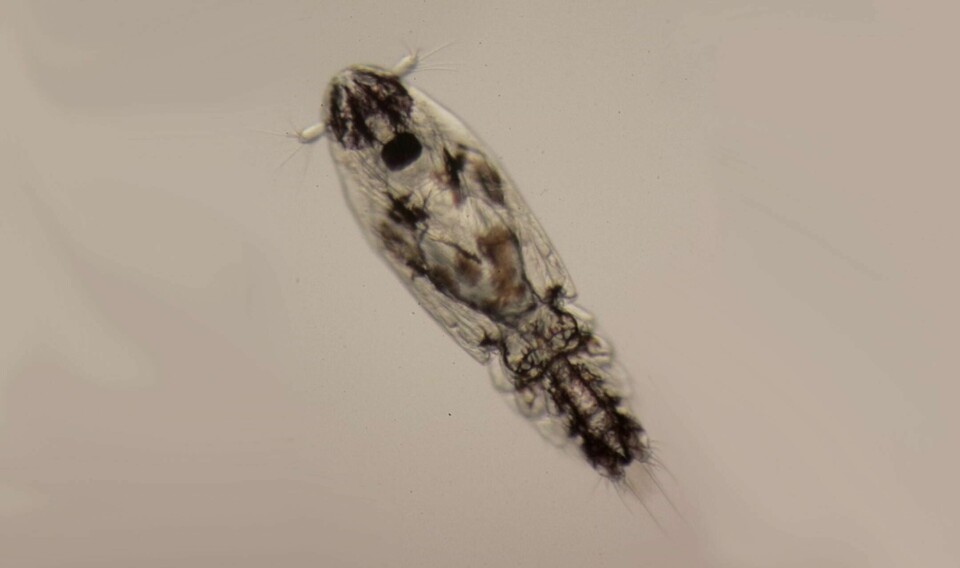
3D camera promises a new focus on elusive sea lice
Researchers aim to use cutting-edge tech to improve identification and counting of larvae in sea after netting project found just 19 in 372 field samples
Researchers in Scotland have begun an 18-month project to develop a more effective method of identifying and quantifying larval stages of sea lice by using a 3D holographic camera and artificial intelligence.
The £359,000 project, led by the University of Aberdeen and funded by the UK Seafood Innovation Fund, follows inconcluvie results from the Salmon Parasite in Linnhe, Lorn and Shuna (SPILLS) project focused on testing and improving sea lice dispersal monitoring and modelling techniques in an area with several fish farms.
The SPILLS project involved collaboration between salmon farmer Mowi Scotland, trout farmer Kames, several local fisheries trusts and organisations, the Scottish Association for Marine Science (SAMS), and the Scottish Government.
Speaking at an aquaculture innovation summit organised by the Sustainable Aquaculture Innovation Council (SAIC) earlier this month, marine biologist Dr Kim Last from SAMS said current sea lice distribution models are basically focused on the movement of the water column driven by wind and tide, and a little bit of information on the behaviour of the larvae themselves.
Nets and microscopes
He and other members of the SPILLS team spent a huge amount of effort and time over six months going out in small boats to try to catch sea lice.
“The idea was to quantify them in time and space. We did a lot of netting, then we spent a huge amount of time looking down microscopes trying to identify and quantify the abundance of these lice,” he explained.
After six months and 372 field samples we ended up with only 19 larvae, and the conclusion was that they’re pretty rare, and they’re probably also pretty patchy
“After six months and 372 field samples we ended up with only 19 larvae, and the conclusion was that they’re pretty rare, and they’re probably also pretty patchy.”
The new project, involving SAIC, SAMS, and Aberdeen University, aims to provide an in-situ early-warning system about sea lice larvae abundance that would reduce the risk posed by lice to farmed fish as well as to wild salmon and trout.
Lice-specific system
Last explained that a holographic camera works with a laser and can look at things that are just microns (100th of a millimetre) in size.
A holographic imaging system will be developed specifically for sea lice, and an artificial intelligence (AI) system will then be developed to identify the larvae.
“Once we’ve got that we need to develop a camera that works in the wild,” Last said.
“Sea lice larvae behaviour is quite complex. They have got migrations, they respond to different salinity gradients, and so we’re going to use our oceanographic expertise (at SAMS) to understand what the water column is doing, and then we’re going to go into a habitat where we know sea lice exists and we hypothetically think they may be in higher densities.
“Our ultimate aim is to provide accurate data to model and predict sea lice distributions, which will be of interest to industry and to the government regulatory bodies such as SEPA (Scottish Environment Protection Agency).”
Sea lice risk framework
The new project comes at a time when SEPA is working towards the introduction of its proposed sea lice risk framework. This would place new, tougher restrictions on fish farms based on modelling of lice levels from the farms and their predicted impact on wild salmon smolts migrating to sea and on trout - despite the fact that the SPILLS project didn't find lice where the models predicted they would be.
SEPA announced last week that implementation of its new sea lice risk assessment framework was a priority for 2023-24. Fish Farming Expert understands that an announcement concerning the framework is expected from SEPA this week.
Salmon Scotland, which represents fish farmers and other actors linked to the sector, has questioned the premise that the framework is based on and warned that it will result in a de facto moratorium on farm development on the west coast of Scotland and Western Isles.
In its response to a SEPA consultation about the plan, Salmon Scotland wrote that the framework places undue reliance on a proposed modelling framework and does not acknowledge areas of uncertainty, and their impact on the wider risk assessment process.
“We believe it is not possible to validate the proposed framework and that it is not acceptable to regulate a sector when the effectiveness of regulation cannot be determined,” Salmon Scotland wrote.






















































